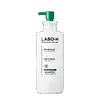What's inside
What's inside
 Key Ingredients
Key Ingredients

 Benefits
Benefits

 Concerns
Concerns

 Ingredients Side-by-side
Ingredients Side-by-side

Water
Skin ConditioningSodium C14-16 Olefin Sulfonate
CleansingDisodium Laureth Sulfosuccinate
CleansingLauryl Betaine
CleansingCoco-Glucoside
CleansingSodium Chloride
MaskingChamaecyparis Obtusa Water
MaskingDecyl Glucoside
CleansingPotassium Cocoyl Glycinate
Cocamide Mipa
EmulsifyingParfum
MaskingDipropylene Glycol
Humectant1,2-Hexanediol
Skin ConditioningPolyquaternium-10
Polyquaternium-22
Hydroxyacetophenone
AntioxidantMenthol
MaskingHexadecene
SolventTetradecene
EmollientCitric Acid
BufferingDisodium EDTA
Ethylhexylglycerin
Skin ConditioningButylene Glycol
HumectantMalt Extract
Skin ProtectingPhospholipids
Skin ConditioningGlycine Soja Oil
EmollientArginine
MaskingGlycerin
HumectantBerberis Vulgaris Root Extract
AntimicrobialFragaria Chiloensis Fruit Extract
Skin ConditioningLycium Chinense Fruit Extract
AntioxidantMorus Nigra Fruit Extract
Skin ConditioningHydrolyzed Wheat Protein
Skin ConditioningHydroxycitronellal
PerfumingLinalool
PerfumingWater, Sodium C14-16 Olefin Sulfonate, Disodium Laureth Sulfosuccinate, Lauryl Betaine, Coco-Glucoside, Sodium Chloride, Chamaecyparis Obtusa Water, Decyl Glucoside, Potassium Cocoyl Glycinate, Cocamide Mipa, Parfum, Dipropylene Glycol, 1,2-Hexanediol, Polyquaternium-10, Polyquaternium-22, Hydroxyacetophenone, Menthol, Hexadecene, Tetradecene, Citric Acid, Disodium EDTA, Ethylhexylglycerin, Butylene Glycol, Malt Extract, Phospholipids, Glycine Soja Oil, Arginine, Glycerin, Berberis Vulgaris Root Extract, Fragaria Chiloensis Fruit Extract, Lycium Chinense Fruit Extract, Morus Nigra Fruit Extract, Hydrolyzed Wheat Protein, Hydroxycitronellal, Linalool
Water
Skin ConditioningSodium Cocoyl Isethionate
CleansingDisodium Laureth Sulfosuccinate
CleansingLauryl Betaine
CleansingGlyceryl Stearate
EmollientTrihydroxystearin
Skin ConditioningPolyquaternium-10
Caffeine
Skin ConditioningCetyl Alcohol
EmollientDicaprylyl Ether
EmollientSodium Benzoate
MaskingSodium Salicylate
PreservativeMentha Piperita Oil
MaskingMenthol
MaskingCitric Acid
BufferingCaprylic/Capric Triglyceride
MaskingCaprylyl Glycol
EmollientIllicium Verum Fruit/Seed Oil
MaskingRosmarinus Officinalis Leaf Oil
MaskingDextrin
AbsorbentJuniperus Virginiana Oil
MaskingTetrasodium EDTA
Mentha Arvensis Leaf Oil
MaskingEucalyptus Globulus Leaf Oil
PerfumingOcimum Basilicum Oil
MaskingAnthemis Nobilis Flower Oil
MaskingViola Odorata Leaf Extract
MaskingLactobacillus Ferment Lysate
Skin ConditioningGlycerin
HumectantCamellia Sinensis Seed Extract
HumectantTocopherol
AntioxidantCeramide NP
Skin ConditioningHydrogenated Lecithin
EmulsifyingPhytosphingosine
Skin ConditioningBiotin
AntiseborrhoeicWater, Sodium Cocoyl Isethionate, Disodium Laureth Sulfosuccinate, Lauryl Betaine, Glyceryl Stearate, Trihydroxystearin, Polyquaternium-10, Caffeine, Cetyl Alcohol, Dicaprylyl Ether, Sodium Benzoate, Sodium Salicylate, Mentha Piperita Oil, Menthol, Citric Acid, Caprylic/Capric Triglyceride, Caprylyl Glycol, Illicium Verum Fruit/Seed Oil, Rosmarinus Officinalis Leaf Oil, Dextrin, Juniperus Virginiana Oil, Tetrasodium EDTA, Mentha Arvensis Leaf Oil, Eucalyptus Globulus Leaf Oil, Ocimum Basilicum Oil, Anthemis Nobilis Flower Oil, Viola Odorata Leaf Extract, Lactobacillus Ferment Lysate, Glycerin, Camellia Sinensis Seed Extract, Tocopherol, Ceramide NP, Hydrogenated Lecithin, Phytosphingosine, Biotin
Ingredients Explained
These ingredients are found in both products.
Ingredients higher up in an ingredient list are typically present in a larger amount.
Citric Acid is an alpha hydroxy acid (AHA) naturally found in citrus fruits like oranges, lemons, and limes.
Like other AHAs, citric acid can exfoliate skin by breaking down the bonds that hold dead skin cells together. This helps reveal smoother and brighter skin underneath.
However, this exfoliating effect only happens at high concentrations (20%) which can be hard to find in cosmetic products.
Due to this, citric acid is usually included in small amounts as a pH adjuster. This helps keep products slightly more acidic and compatible with skin's natural pH.
In skincare formulas, citric acid can:
While it can provide some skin benefits, research shows lactic acid and glycolic acid are generally more effective and less irritating exfoliants.
Most citric acid used in skincare today is made by fermenting sugars (usually from molasses). This synthetic version is identical to the natural citrus form but easier to stabilize and use in formulations.
Read more about some other popular AHA's here:
Learn more about Citric AcidThis ingredient is a cleansing agent, surfactant, and foam booster. It considered an alternative to traditional sulfates (Sulfosuccinate) and is allowed in "sulfate-free" products.
According to a manufacturer, this ingredient is mild and can be used in baby and bath options.
Glycerin is already naturally found in your skin. It helps moisturize and protect your skin.
A study from 2016 found glycerin to be more effective as a humectant than AHAs and hyaluronic acid.
As a humectant, it helps the skin stay hydrated by pulling moisture to your skin. The low molecular weight of glycerin allows it to pull moisture into the deeper layers of your skin.
Hydrated skin improves your skin barrier; Your skin barrier helps protect against irritants and bacteria.
Glycerin has also been found to have antimicrobial and antiviral properties. Due to these properties, glycerin is often used in wound and burn treatments.
In cosmetics, glycerin is usually derived from plants such as soybean or palm. However, it can also be sourced from animals, such as tallow or animal fat.
This ingredient is organic, colorless, odorless, and non-toxic.
Glycerin is the name for this ingredient in American English. British English uses Glycerol/Glycerine.
Learn more about GlycerinLauryl Betaine is a surfactant. It helps cleanse your skin by gathering oil, dirt, and other pollutants to be rinsed away.
Menthol is a compound found in mint plants, such as peppermint. In its pure form, it is a clear crystalline substance.
Menthol is known for its cooling sensation; however, the cooling is actually from your skin being sensitized. Menthol can worsen rosacea. We recommend speaking with a professional if you have concerns.
Menthol also has antimicrobial properties.
Learn more about MentholPolyquaternium-10 is an ammonium salt of hydroxyethylcellulose. It is a white and granular powder used as a film-former and anti-static agent.
This ingredient is commonly found in hair conditioning products. According to a manufacturer, its positive charge makes it great for absorbing hair proteins. The manufacturer also states this ingredient helps with curl retention.
For haircare friends: this ingredient is not a silicone.
Learn more about Polyquaternium-10Water. It's the most common cosmetic ingredient of all. You'll usually see it at the top of ingredient lists, meaning that it makes up the largest part of the product.
So why is it so popular? Water most often acts as a solvent - this means that it helps dissolve other ingredients into the formulation.
You'll also recognize water as that liquid we all need to stay alive. If you see this, drink a glass of water. Stay hydrated!
Learn more about Water